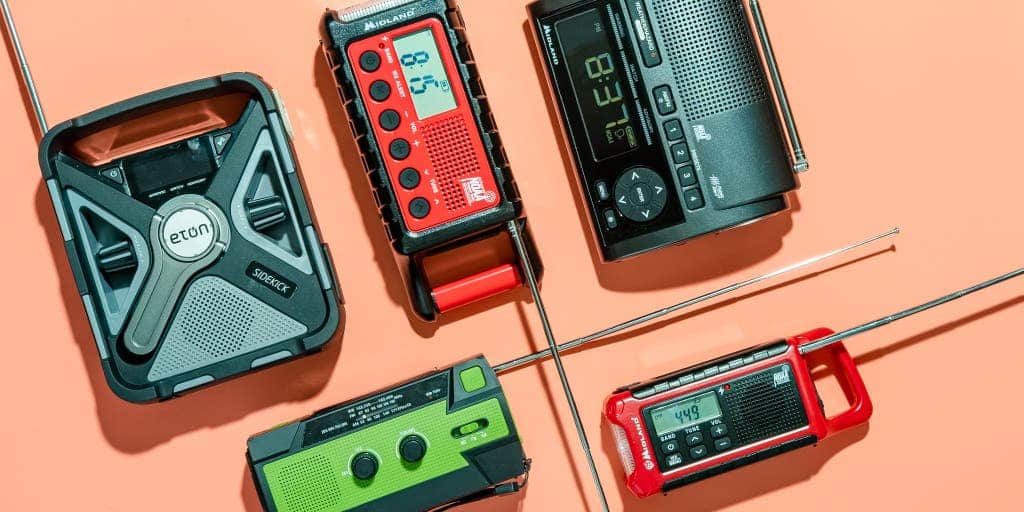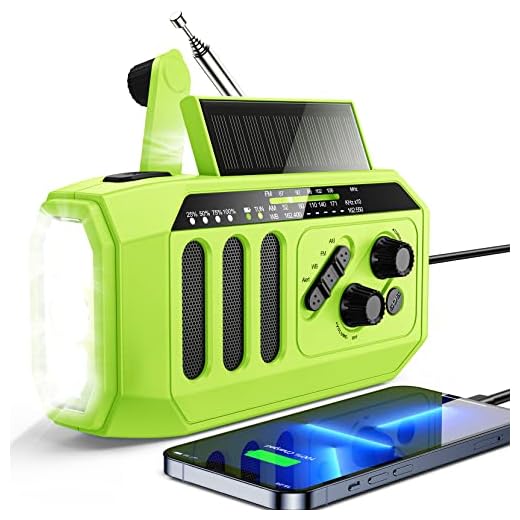Have you ever wondered about the difference between a weather radio and a regular radio? Well, wonder no more! This article will explore the distinctions between these two types of radios and discuss their unique features.
By the end, you’ll clearly understand how a weather radio differs from a regular radio and why having one in your home is essential. So, let’s get started and uncover the fascinating world of weather radios!
Review contents
Purpose of a Weather Radio
A weather radio serves a specific purpose – to provide reliable and up-to-date weather information. Unlike regular radios that focus on broadcasting music, news, and other entertainment content, a weather radio’s primary function is to keep you informed about weather conditions, alerts, and warnings. It lets you stay prepared and make informed decisions, from daily activities to emergencies.
Alerts and Warnings
One of the essential purposes of a weather radio is to provide alerts and warnings. It ensures you receive timely notifications about severe weather conditions such as hurricanes, tornadoes, thunderstorms, and floods.
These alerts help you take appropriate action, such as seeking shelter or taking necessary precautions to protect yourself and your property. The specificity of the alerts allows you to know if the dangerous weather conditions will affect your area, providing you with localized information and peace of mind.
Emergency Communication
During emergencies, communication is crucial. A weather radio plays a significant role in emergency communication by providing critical updates and information from reliable sources such as the National Weather Service (N.W.S.), public and private weather stations, and local authorities.
It acts as a lifeline where other communication networks may fail or become overwhelmed. With a weather radio, you can always stay connected to the latest information and instructions during severe weather events or other emergencies.
Specific Weather Updates
Weather radios excel in providing specific weather updates. While regular radios may occasionally include weather reports, weather radios are specifically designed to prioritize weather information.
They offer accurate and detailed forecasts, including temperature, wind speed, precipitation chances, and atmospheric conditions. This level of specificity allows you to plan your activities accordingly, whether deciding what to wear for the day or making outdoor plans based on the expected weather conditions.
Functionality
Channel Frequencies
Weather radios operate on specific frequency channels to receive weather information. These channels transmit weather reports, alerts, and warnings, ensuring you receive the most relevant and up-to-date information. The most commonly used channel is the NOAA Weather Radio (N.W.R.) frequency, which the N.W.S. utilizes. This channel provides comprehensive weather coverage across the United States and its territories.
Reception Quality
Another important aspect of weather radios is their reception quality. Weather radios employ advanced reception technology to provide accurate and reliable weather information. They are designed to minimize interference and maximize signal strength, allowing you to receive clear and uninterrupted broadcasts even in areas with challenging reception conditions. The reception quality ensures that you can trust the information you receive and make well-informed decisions based on it, regardless of location.
Battery Life and Power Source
Weather radios often come with long-lasting battery life, making them reliable during power outages or when electricity is not readily available.
Many models offer various power sources, including A.C. power adapters, rechargeable batteries, and backup batteries.
This versatility ensures that you can use your weather radio in different scenarios, from the convenience of being plugged into an outlet at home to relying solely on battery power during outdoor adventures or emergencies.
Broadcasts and Coverage
National Weather Service
The National Weather Service is a crucial source of weather information broadcasted through weather radios. With a weather radio, you can tap into the expertise and data this government agency provides. The N.W.S. broadcasts weather updates, forecasts, advisories, and warnings nationwide. Whether you live in a coastal area susceptible to hurricanes or a region prone to severe storms, the N.W.S. broadcasts ensure that you receive accurate and location-specific information to stay prepared and safe.
Public and Private Weather Stations
Weather radios also receive broadcasts from public and private weather stations. Meteorological organizations, universities, and other institutions focusing on weather monitoring often operate these stations. The broadcasts from public and private weather stations provide supplementary data and insights that complement the information provided by the N.W.S. You gain a more comprehensive understanding of the current and forecasted weather conditions by receiving updates from multiple sources.
Localized Information
In addition to national and regional broadcasts, weather radios provide localized information. Depending on the model and programming options, you can set your weather radio to receive alerts and updates specific to your area.
This localized information is precious when severe weather is approaching or when there are alerts for your immediate vicinity. By receiving customized information, you can make informed decisions based on the proximity and relevance of the weather conditions to your exact location.
Weather Information
Forecast Updates
One of the primary functions of a weather radio is to provide forecast updates. These updates enable you to plan your activities, whether deciding on outdoor events, organizing trips, or making crucial business decisions. A weather radio ensures you have accurate and reliable forecasts readily available, allowing you to adjust your plans accordingly and make informed choices about your day-to-day activities.
Severe Weather Reports
Weather radios excel in providing crucial information about severe weather conditions. A weather radio informs you about threatening weather events, from tornadoes and hurricanes to thunderstorms and flash floods. Severe weather reports include detailed information about the anticipated weather phenomena’ severity, location, and duration. This information empowers you to take the necessary precautions and stay safe during adverse weather.
Weather Alerts and Warnings
Weather alerts and warnings are essential elements of weather radios. Unlike regular radios, weather radios feature specific alerting systems such as Specific Area Message Encoding (SAME) technology. These alerts notify you of severe weather conditions within your designated area. By programming your weather radio with the desired area codes, you can ensure you receive only the alerts relevant to your location, avoiding unnecessary disruptions and staying informed about weather-related risks.
Features
S.A.M.E. Technology
Specific Area Message Encoding (SAME) technology is a significant feature of weather radios. It allows you to program the radio to recognize and receive alerts for specific locations or regions.
With SAME technology, you can customize your weather radio to receive alerts only for your surrounding area, eliminating irrelevant alerts that may not apply to your location. This feature streamlines the information you receive, ensuring you receive alerts applicable to your immediate environment.
Programmable Alerts
Weather radios often offer programmable alert options to tailor the notifications you receive. You can turn on or off alerts for specific weather conditions or severity levels. This customization allows you to prioritize the alerts that matter most to you and avoid unnecessary distractions. Whether you prefer to focus on hurricane warnings or only want to receive tornado alerts, programmable alerts provide a personalized and efficient way of receiving weather information.
Portability and Durability
Compact Size
Weather radios come in various sizes; many models are compact and portable. Their small size makes them convenient to carry during outdoor activities, hiking, camping, or traveling. Whether you prefer a handheld weather radio or a compact one that easily fits in your backpack, their size ensures you can take them wherever you go, allowing you to stay updated on the latest weather information during your adventures.
Battery Backup
To enhance portability and reliability, weather radios often include battery backup options. With battery backup, you can ensure that your weather radio continues functioning even during power outages or when you are away from a power source.
This feature is essential during emergencies when access to electricity may be limited. The added peace of mind provided by battery backup ensures you can rely on your weather radio when needed.
Waterproof and Shockproof Design
Considering the outdoor use and potential exposure to harsh weather conditions, many weather radios are designed to be waterproof and shockproof. This rugged construction allows them to withstand rain, snow, and accidental drops, ensuring their durability and longevity.
Whether caught in a sudden downpour or accidentally dropping your weather radio while hiking, its resilient design protects it from damage, allowing it to continue providing vital weather information.
Cost and Availability
Price Range
The price range of weather radios varies depending on their features, brand, and durability. Entry-level weather radios can be affordable, making them accessible to anyone seeking reliable weather information.
Mid-range weather radios offer additional features like SAME technology and programmable alerts, while high-end models may include advanced reception capabilities and extended battery life. The price range ensures a weather radio suitable for every budget and requirement.
Availability
Weather radios are widely available both online and in brick-and-mortar stores. They can be purchased from electronics retailers, outdoor supply stores, and general department stores.
Additionally, many reputable brands offer their weather radios through their official websites or authorized dealers, ensuring broad availability for consumers interested in acquiring a reliable source of weather information.
Variety of Models
The market offers various weather radio models catering to different needs and preferences. From basic models focusing solely on weather broadcasting to more advanced ones incorporating additional features such as AM/FM radio, flashlight functions, and smartphone charging capabilities. This variety lets you choose the weather radio best suits your requirements and desired functionalities.
Advantages
Early Warning System
An early warning system is one of the most significant advantages of using a weather radio. Unlike relying solely on weather apps or internet sources, weather radios offer real-time information directly from trusted sources like the N.W.S.
This direct and immediate access to weather updates enhances your ability to swiftly prepare for impending weather events. The early warning system provided by weather radios can save lives and minimize property damage by allowing you to take proactive measures.
Targeted Notifications
Weather radios provide targeted notifications through the SAME technology. By programming your weather radio with the specific area codes relevant to your location, you receive alerts explicitly tailored to your area.
This targeted approach ensures you only receive applicable and valuable alerts to your immediate surroundings. It eliminates the need to sift through generalized weather reports and allows you to focus directly on the weather conditions relevant to your situation.
Reliable Reception in Remote Areas
Weather radios demonstrate remarkable reception capabilities, even in remote areas and regions with limited access to other communication channels.
Whether camping in the wilderness or living in rural areas far from cellular networks and internet connectivity, a weather radio lets you stay informed about the local weather conditions without relying on external infrastructure.
The reliable reception ensures you can always access critical weather information, regardless of geographical location.
Limitations
Limited Range
Weather radios have a limited broadcast range, typically 20 to 50 miles from the transmitting station. Therefore, their effectiveness may decrease significantly if you are far from the nearest weather radio transmitter.
While this limitation can impact the relevance of alerts and updates received, it is essential to remember that weather radios are primarily designed to provide information for specific areas, focusing on keeping individuals informed about localized weather conditions.
Dependence on External Power
Weather radios might depend on alternative power sources when power outages occur for prolonged periods. Although many models offer battery backup, the availability of backup power ultimately determines the duration during which the weather radio will remain operational. It is essential to ensure that your weather radio is adequately charged or that you have extra batteries to sustain its functionality during extended power interruptions.
Lack of Entertainment Features
Weather radios are designed explicitly for weather-related information, so they often lack the entertainment features commonly found in regular radios, such as playing music or accessing standard radio channels.
While this limitation may appear insignificant, it is essential to consider whether you want a radio solely for weather updates or prefer a device offering a broader range of entertainment options. It is worth noting, however, that some weather radios include additional functionalities like AM/FM radio to balance weather updates and entertainment.
Common Uses
Outdoor Activities
Weather radios are immensely valuable during outdoor activities. Whether you enjoy hiking, camping, boating, or other recreational pursuits, access to accurate and timely weather information is crucial.
A weather radio allows you to monitor weather conditions to ensure your safety and make informed decisions about outdoor activities. By staying aware of any approaching storms or severe weather, you can adjust your plans and take necessary precautions to keep yourself and your companions safe.
Emergency Preparedness
Maintaining a weather radio as part of your emergency preparedness kit is highly recommended. During severe weather events, natural disasters, or other emergencies, communication is often disrupted, and access to the internet or cellular networks may be limited.
In such situations, a weather radio remains a reliable source of information, providing invaluable updates and alerts, Including instructions from local authorities and rescue teams. A weather radio ensures you receive critical information when it matters most, allowing you to make swift and informed decisions to protect yourself and your loved ones.
Agriculture and Farming
Weather conditions play a vital role in agriculture and farming operations. Farmers rely on accurate weather information to plan planting, irrigation, and harvesting schedules. Farmers can receive specific weather updates essential for their crops, livestock, and other agricultural activities using a weather radio. Weather radios enable farmers to stay ahead of changing weather patterns and make informed decisions about their land and livelihood, ultimately contributing to the success and sustainability of their agricultural operations.
In conclusion, a weather radio serves a unique purpose compared to regular radios. It provides alerts, warnings, and specific weather information to ensure that you stay informed and prepared. With its functionality, broadcasts, and features, a weather radio acts as an early warning system, allowing targeted notifications and reliable reception even in remote areas.
While it does have limitations, such as limited range and dependence on external power, its utility in outdoor activities, emergency preparedness, and agriculture make it an essential tool for anyone seeking reliable weather updates. Whether planning a camping trip, preparing for emergencies, or managing agricultural operations, a weather radio is a reliable companion to keep you informed and safe.
Midland - WR120B - NOAA Emergency Weather Alert Radio - S.A.M.E. Localized Programming, Trilingual Display, 60+ Emergency Alerts, & Alarm Clock (WR120B - Box Packaging)
$31.81 in stock
1 used from $31.48
FORTECLEAR 5000mAh Hand Crank Emergency Radio, NOAA/AM/FM Weather Radio Indoor and Outdoor, 3W LED Solar Flashlight/Reading Lamp Portable Radio, SOS Alarm and Phone Charge, Survival Gear for Hurricane
FosPower 2000mAh NOAA Emergency Weather Radio (Model A1) Portable Power Bank with Solar Charging, Hand Crank & Battery Operated, SOS Alarm, AM/FM & LED Flashlight for Outdoor Emergency
$29.99 in stock
Weather Radio Raynic 5000 Solar Hand Crank Emergency Radio 5 Ways Powered AM/FM/SW/NOAA Weather Alert Portable Radio with Flashlight, Reading Lamp (Yellow)
$35.99 in stock
2023 Newest Emergency Radio, 4000mAh Power Bank Solar Hand Crank Radio, AM/FM/WB/NOAA and Alert Portable Weather Radio, Multifunctional SOS Alarm Survival Radio with Flashlight for Outdoor Home
$27.99 in stock















































